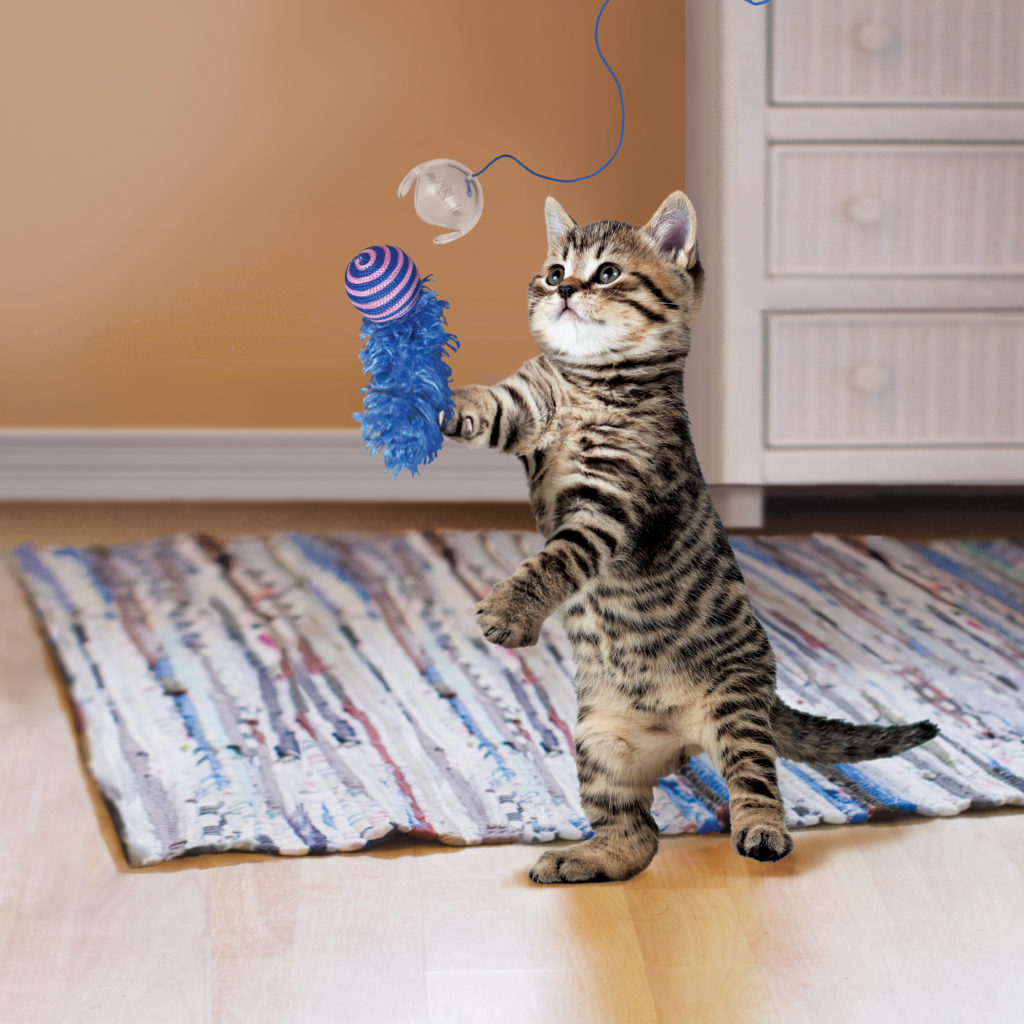A cat is the perfect addition when you are looking to add a member to the family. Cats can bring laughter to your family through their evergoing shenanigans of knocking things off counters and randomly getting cases of the zoomies. They can also bring warmth to your heart with their ability to form relationships with you and other family members.
Petting their soft fur can also be a comfort when the day has been rough, and their purrs can bring you some relief when the day has been stressful. Also, there is nothing quite as cute as your cat hopping next to you on the sofa and proceeding to “make biscuits” and get comfy.
What Factors Do I Need To Consider When Choosing a Cat?
Adopting a new kitty is a big responsibility and time commitment, but we must say that the rewards are quite worth it! There are vet visits to make, decisions about which food and litter to buy, and steps to take to make sure your home is a cat-friendly space.
When it comes to making sure that your cat has toys to keep their curious nature occupied, a KONG toys will help satisfy your cat’s natural instincts of pouncing, scratching, and hunting. Inside every cat reluctantly wearing a sweater lies the ferocious instincts of their wild cat ancestors.
During the important decision of picking out a kitty, there are several decisions to take into consideration. Even when you have a particular breed in mind, choosing which gender to adopt can make the decision a little more complicated, as there are differences between males and females. Although both make the best of buddies, you may find that you have a preference for one gender.
We want to clarify that these are clunky guidelines; as all cat lovers know, every cat is unique and impossible to put in a box. (Unless it’s an actual cardboard box — cats love those).
Let’s discuss the basic differences between male cats and female cats so you can be well-informed and prepared to bond with your cat.
How Are Male and Female Cats Physically Different?
When it comes to gender, physical differences are the most easily noticeable. Of course, the first and biggest difference between male and female cats is that they have different genitals.
Genital Differentiations
When cats are kittens, it can be a little hard to tell if they are male or female. To determine the gender of a kitten, look at the area below their anus. If you see an organ close to the anus that resembles a small slit, this would be a female cat. If you see a small dot about an inch of space from the anus, this would be a male cat.
Need a second opinion? If you’re a member of the KONG Club, you have access to the best, highly-trained animal experts. If you are trying to determine the gender of your kitten with little success, these experts can help you with ease since they are available 24/7.
Color Variations
Physical color is the second physical difference that can help you determine which gender a cat is. Almost all calico cats (black, white, and orange in color) are female. Orange cats are typically male, but there can be female orange cats as well.
Cats’ chromosomes are behind this coloring and gender relationship. If you are looking at a few cats who need homes and spot a calico kitty, it’s likely this feline is a female. That being said, male tabbies and calicos can exist but are rare and generally sterile.
Weight Classes
Male and female cats differ physically in their appearance. Female cats tend to be smaller and lighter when compared to male cats. It may be a little hard to determine if your female cat is small and light, but when a lady cat sits next to a male cat, the male will typically look larger and heavier.
Male cats also tend to have chubby cheeks, especially if they have not been neutered. Their cheeky appearance is caused by testosterone. Some believe that this chubby-faced appearance serves as protection in case they were to get into a skirmish with another male cat.
Do Male and Female Cats Behave Differently?
Like many species, there are also behavioral differences between male and female cats. While personality differences can also be attributed to age and breed, it can be helpful to know some general differences when it comes to gender. These differences can also be observed if your cat has been spayed or neutered or not.
4. Behavior of Unaltered Cats
The fourth notable difference between male and female cats is their behaviors if they are unaltered. If your cat has not been spayed or neutered, you may see gender-specific behaviors when your cat’s instinct to breed kicks in.
When female cats are in heat, they will become very vocal and meow and yowl loudly. This is to attract males to her area. She will also rub against objects, knead her back feet, and will move her tail to one side.
When female cats are in heat, any male cats around her who have not been neutered will also show some specific behaviors. They may become more aggressive to other male cats nearby. Male cats can smell the pheromones of female cats in heat and will become restless until they are able to mate.
5. Behavior of Altered Cats
If your cat has been spayed or neutered, any reproductive-related behaviors will not be present. However, there are still personality tendencies that set male and female cats apart. These personality tendencies are our fifth difference between female and male cats.
Female cats can be more territorial with new cats in their space, and females are more likely to use the litter box consistently. Female cats also value their personal space and their alone time. Male cats are said to be more friendly, sociable, and form stronger bonds with human family members. Although they may mark with urine, this tendency does go down drastically after being neutered.
For any cat, it is vital to socialize them from an early age if possible. This helps ensure that your cat feels comfortable around people and that they do not feel too fearful around new people or noises.
Importance of Spaying and Neutering
An important factor when caring for a cat is whether to spay or neuter your pet. When your cat’s reproductive organs are removed, so are breeding-based instinct-related behaviors.
Spaying and neutering your cat also helps to keep the cat population down. With cats being able to reproduce quite rapidly, many unwanted kittens are taken to shelters.
Practicing reproductive measures with cats can also help to keep unwanted health problems at bay. Both female and male cats have smaller chances of developing infections and cancers in their reproductive systems.
Boy or Girl: Cats Rule the World
No matter if your cat is a boy or a girl, we love our furry felines and the joy they bring to our life. Although there can be personality assumptions made about our cats depending on their genders, we know that our cats are special and unique. Certain breeds may have personality quirks or habits they picked up from their life before they met you.
Since no two cats are alike, your pals at the KONG Club can help you understand your cat and their behaviors a little more clearly. Being a KONG Club member gives you access to veterinary professionals and animal behavior experts who can help you navigate your cat’s instinctual behaviors.
Being a member gives you access to coaching with our experts but also access to the KONG Clubhouse. This spot is where you can chat with fellow pet parents for advice when you want to know if any pet parents have traveled down the same road you have with your cat.
While your cat is being engaged mentally and physically, you’ll get to watch them being absolutely adorable and get all the new content you need for your cat’s social media accounts. (Be sure to tag us!)
Being a KONG Club member gives you the opportunity to get to learn more about your cat and receive support when you have a question or concern.
Show your love for your cat by being a member of the KONG Club; sign up today!
Sources:
If You Love Cats, This May Be Why | Psychology Today
Determining Gender of a Kitten | Vet Med Washington State University
Fun Facts About Calico Cats | All Cats Care Center
Breeding and Reproduction of Cats – Cat Owners | Merck Veterinary Manual
Spaying and Neutering | Cornell University College of Veterinary Medicine



